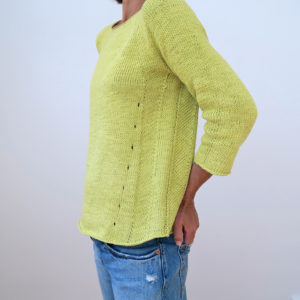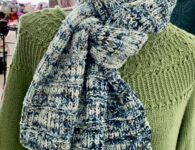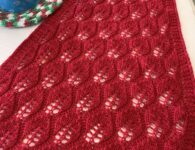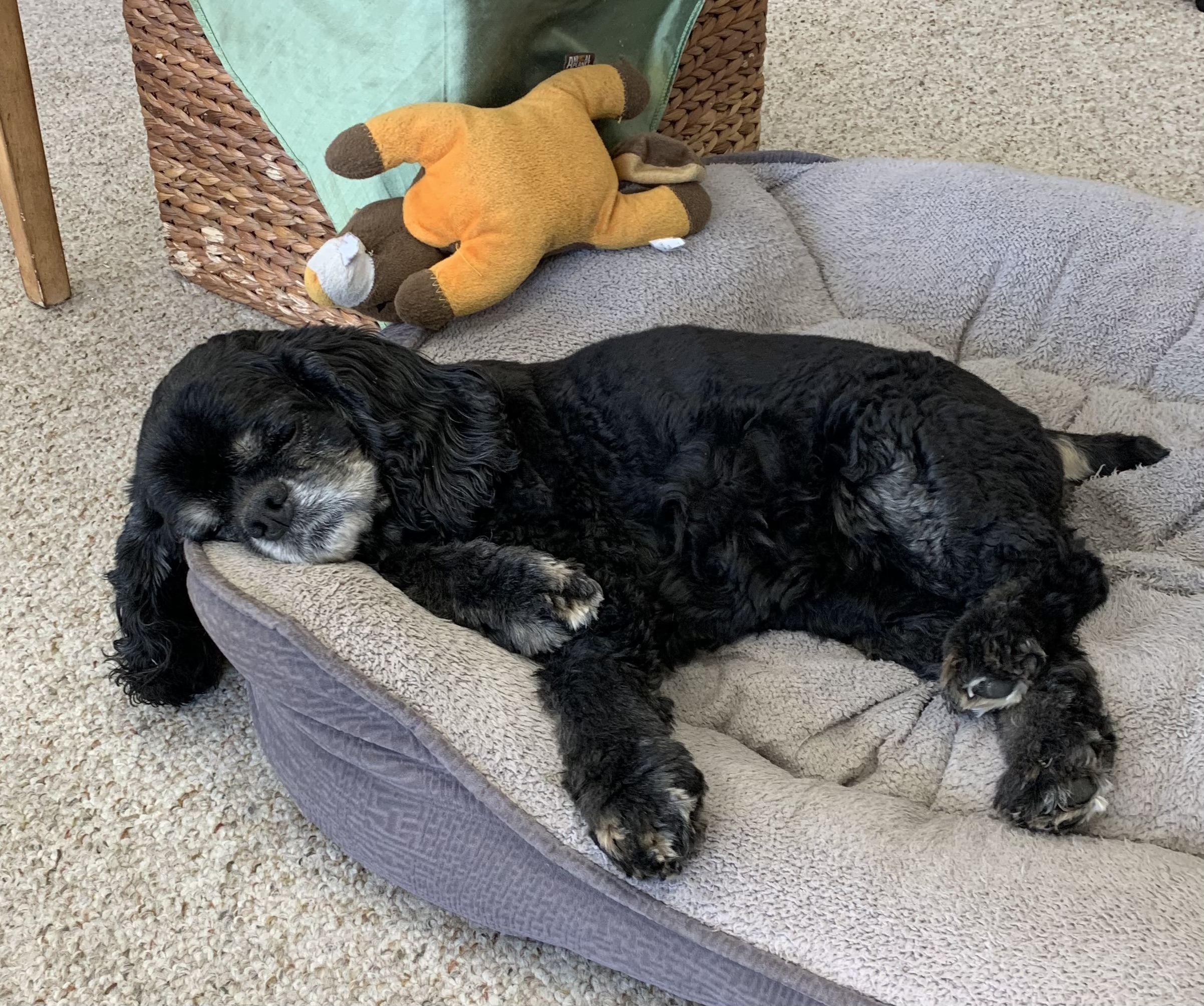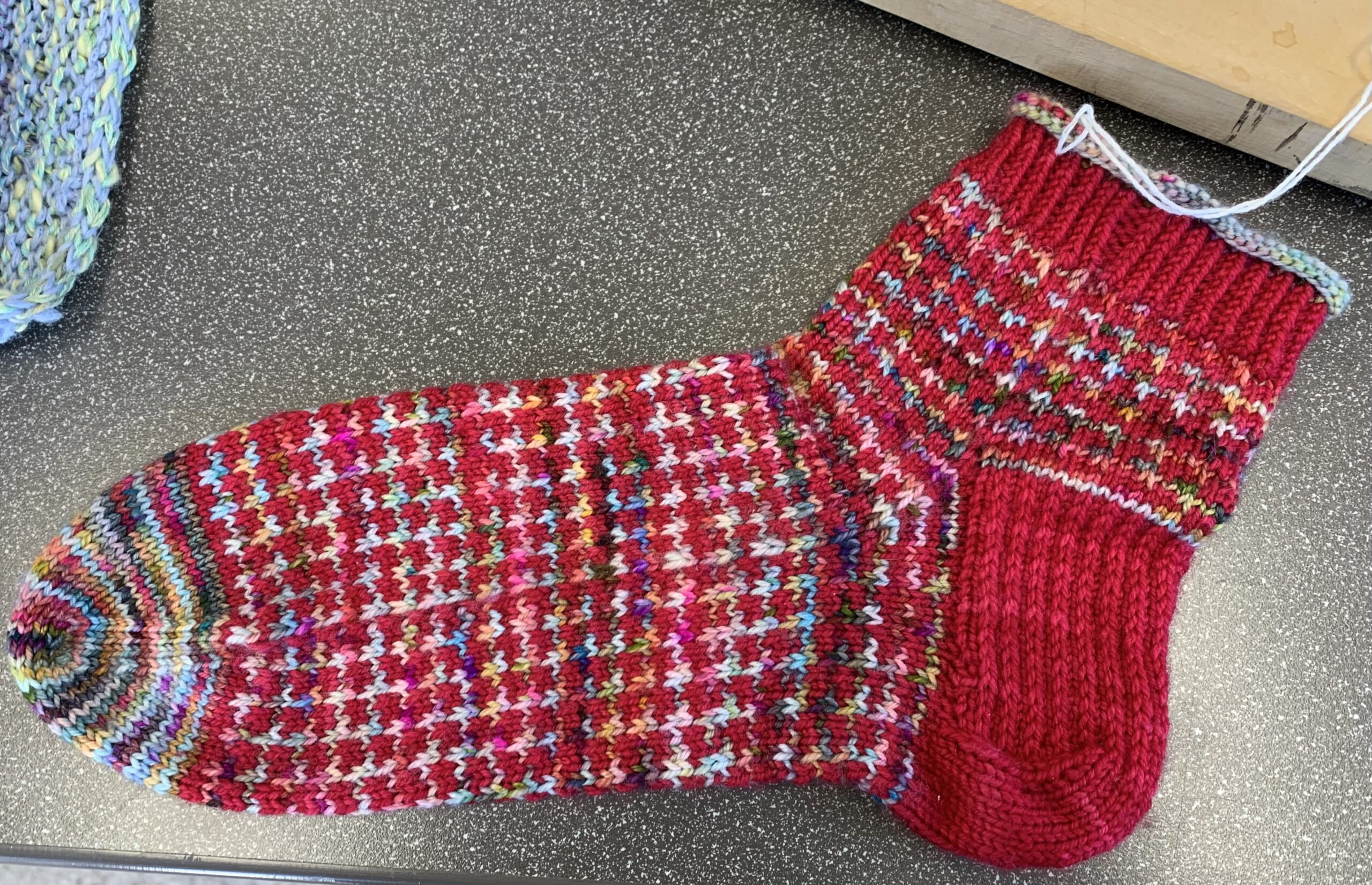Lots of people come into the shop and ask for a pattern for something like an easy hat, a simple baby sweater, or a plain pullover. I show them the patterns that we still stock, but I also ask “Have you looked on Ravelry?” If I get a blank look or “oh, I hate computers” (yep, still get that now and then), we look at print patterns. Sometimes I hear, “I found some but I’d like to buy from you,” which I love but online patterns are welcome in our shop; if it’s a decent pattern (see below) we can find the right yarn and help you to choose the right size and fit. Very often, when I mention Ravelry, I hear “I looked but I get lost.” We can help you with your searches: with a few questions we can narrow things down so you’re not looking at tea cozies when what you want is a cabled cardigan. (All of a sudden, you’re distracted and thinking about the virtues of a tea cozy that looks like an old English cottage – I know how that is!)
So (I ask again) what makes a great pattern? There are a few things that distinguish a poor pattern from a really good one:
Gauge. The number of stitches and rows per inch (or centimeter) that you should achieve. The only kind of pattern that could possibly get away with no gauge is a dishcloth or perhaps a blanket. And even then, you must be sure you have way more yarn than you think you’ll need. If your gauge is way off, (and how will you know?) you could end up using a lot more yarn than you think. If your project has to fit anything (even a teapot), you need a gauge to swatch for.
Size. You need a finished size in inches or centimeters. Small, medium, large: meaningless. 8, 10, 12: meaningless. Even To Fit Bust 32, 36, 40: meaningless. The designer may think that you want a sweater with no ease (the distance between your body and the garment) but that may be because she’s 24 years old and weighs 98 pounds.
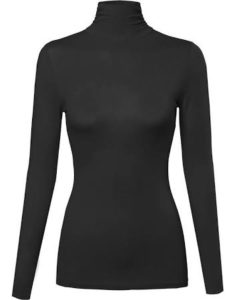 vs.
vs.
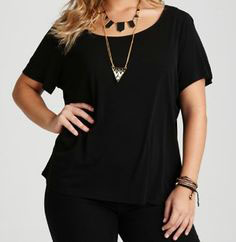
Personally, I want a little wiggle room, and sometimes a lot. On the other hand, the designer may be employed by a yarn manufacturing company, so he or she will be motivated to use as much yardage as possible. Sixteen inches of ease may just make you look like you’re wearing a skillfully cabled pup tent instead of an elegantly casual hand-knit sweater.
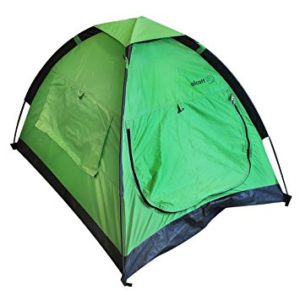
vs.
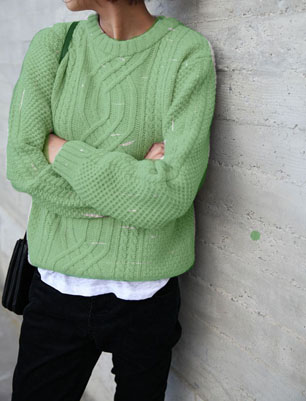
Schematic: Not essential for most accessories, but these boring-looking outlines with lots of numbers are absolutely crucial for a garment. (Below is a random Google image for knitting schematic – I don’t know what garment it’s for.)
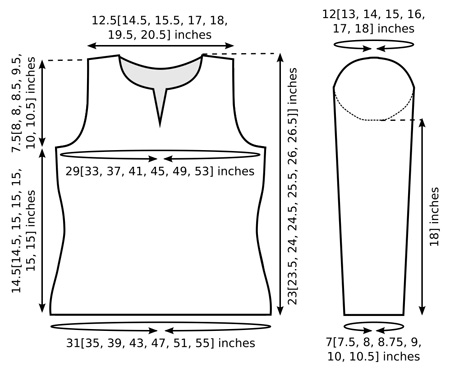
Yuck, right? But! A sweater must fit many different parts of a body, not just the bust. How deep is the armhole? How wide is the neckline? How long are the sleeves? And how will these dimensions sit on your body? A detailed schematic means 1000 times more to a knitter than the beauty shot on the front of the pattern.
Love the way it looks on the model?
How tall is she? Is she long- or short-waisted? Is she wide in the shoulders? Where will the hem fall on you? Will the shoulders fit you or fall inches down your arm? Are the sleeves too wide or too narrow? Without actual dimensions and a tape measure, you don’t know. We can help with that. (The sweater above is Sunshine Coast by Heidi Kirrmaier, who writes wonderful patterns.)
Recommended yardage/yarn details: When a yarn manufacturing company commissions a pattern, they are doing it so you will buy their yarn. That’s understandable, and we need to do some research to find the right substitute. Yardage and weight per skein, fiber content, and recommended gauge all figure in to finding the perfect yarn for your project.
Of course you want the pattern to have clear instructions and explanations of techniques and abbreviations. Before you buy, you can get a good idea of how well the pattern is written from the comments of people who have posted projects for the pattern on Ravelry. Take time to read them before you buy. Study the photos of people who have made the sweater. You can also look at the ratings on the pattern page but be aware that 5 stars from the designer’s two best friends don’t mean nearly as much as 4 stars from 200 people.
Classic design and versatility should also figure in to your decision on a pattern. If something catches your eye with its trendy neckline or hemline or poofy sleeves or pleats or whatever is popular this season, be sure you’re going to want to wear it 3 or 4 years down the road. Hand knitting is not cheap or fast; invest your time and money in something that will make you happy for a long time.
Choosing your next project should be fun but there’s also a little work to be done. We’ll help you with the pattern research, with choosing a yarn that will work for the design that you want, and with making the right size and the right adjustments so that the garment you make will be the one you’re dreaming of.
Churchmouse’s Simple Tee is a great pattern that gives a lot of information to help you choose yarn and size, with a good schematic and excellent instructions. It also gives you lots of flexibility in the look you knit, depending on the yarn and features you choose. (Churchmouse Yarns & Teas is a Local Yarn Store in Bainbridge Island, Washington. Being a LYS, they know what makes a good knitting pattern, and they’re completely reliable as to including the essentials above.) They show two styles on this pattern:
Long with split hem and cap sleeves:
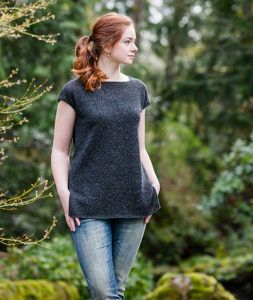
Short with long sleeves:

We gave a class on this sweater this past spring. I made the long version in summery Hempathy with three-quarter sleeves (the gray version below) and have just now finished a tee from the same pattern with a shorter and wider body and short sleeves in Lang’s luscious Lusso (say that 3 times fast), a fingering-weight fuzz of – now, get this – extra fine merino, silk, baby camel and super kid mohair. Can you say luxurious, light, and lovely? A little layer of warmth and color over a black tee!
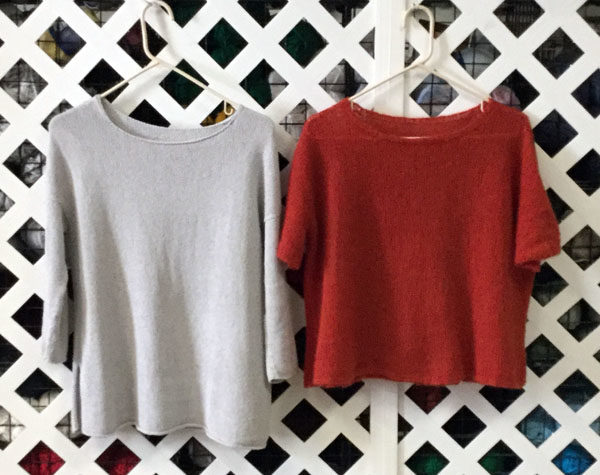
Two completely different looks for different seasons, both wearable for many years: this pattern is a keeper.

